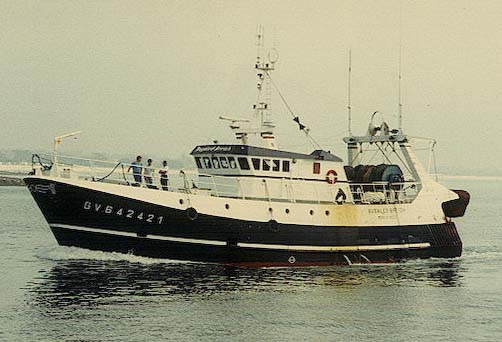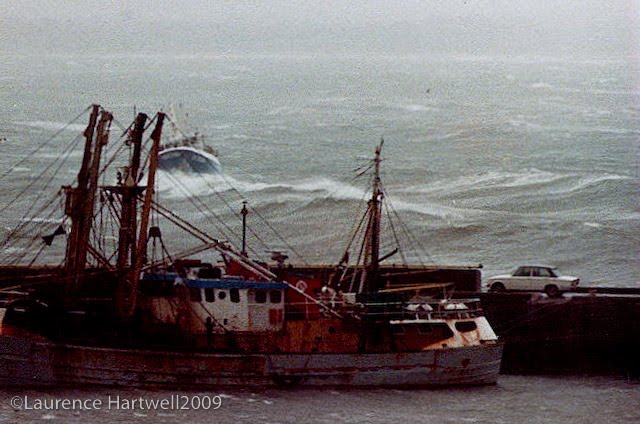Yesterday the Lords held an enquiry into EU regulations and in particular the Landing Obligation which, five years after it was announced will be fully implemented on January 1st 2018.
You can download an audio version here:
Discarding is the practice of throwing unwanted fish back into the sea. An average 1.7 million tonnes of fish and other marine life used to be discarded in the EU each year, because it was unmarketable, unprofitable, exceeded the amount of fish allowed to be caught, or was otherwise unwanted. Not only is this a waste of finite resource, as many fish do not survive discarding, it also makes it difficult to accurately measure how many fish are actually caught (which is necessary to monitor the health of fish stocks and prevent over-fishing).
The EU landing obligation seeks to gradually eliminate discards by requiring all catches of specified types of fish to be landed. It has been implemented in stages, beginning in 2015; by 1 January 2019 it will apply to all fish stocks for which the EU sets a Total Allowable Catch.
This inquiry will focus on the impact that the landing obligation has had to date, how it has been enforced and what challenges are posed by full implementation in January 2019.
At 10:12am Witnesses: Ms Hazel Curtis, Chief Economist, Seafish Dr Tom Catchpole, Principle Fisheries Advisor, Cefas
At 11:17am Witnesses: Mr Barrie Deas, Chief Executive, National Federation of Fishermen's Organisations Mr Mike Park OBE, Chief Executive, Scottish White Fish Producers Association Limited
It was cheering to see that local skipper David Stevens had taken the time and trouble to provide a written submission to the enquiry.
Skipper David Stevens – Written evidence (IEL0001)
My name is David Stevens and I skipper the 20m fishing vessel Crystal Sea SS 118, we work from Newlyn in Cornwall and I have 28 years experience working our family vessel.
Our vessel has always taken part in scientific projects throughout the years, mainly with CEFAS and the MMO but we have also worked with universities on different projects.
We believe that in undertaking a pro-active role in data gathering to help inform science, in the belief that this benefits the fishery as a whole.
In 2013 we undertook trials with REM remote electronic monitoring (CCTV) on board our vessel, we have since had the REM equipment running nonstop since, which is over 6years worth of data.
We did this in partnership at first with the MMO under the catch quota scheme (CQT) then with MMO and CEFAS.
We have learnt a great deal collectively under the scheme and I would say that the work undertaken is well placed to inform your committee of the challenges our industry will face.
We have one major choke species in our fishery of over 30 species which is Area 7B_K haddocks and we mainly focus our efforts on dealing with this species. However we also fully document all species we catch and run separate trials on skate by catch.
All of this work is undertaken by myself and my crew remotely using the REM equipment and once a year we take a CEFAS observer to sea with us to audit and verify what we are doing.
We have come up with many solutions to help minimize the impact of our discards, most have been very effective, but there is no silver bullet to solve the issue we face as it is too large a problem to solve with technical gear methods alone.
For example we reduced undersize fish being caught by 87% using a new technical measure in our nets and we have reduced overall catches of haddock our choke species by 37%. This has come in at an overall economic loss on all other species of 15%. However even with this much effort put in by our vessel we still faced a discard rate of over 70% for mature haddocks.
The main reasons for this species (area 7 B_K haddock) as a choke are The UK relative share with the EU, biologically this species resides in UK waters 60% of stock abundance yet the UK only has a 9% share of the EU TAC total allowable catch.
The main thing I have learnt whilst being involved with this project is that by supplying the transparency on the level we have done by using REM, we have massively increased the knowledge of the fishery, the missing ingredient to solve choke species as a whole is the lack of flexibility that we need in the UK’s diverse mixed fisheries.
In short industry transparency IE. REM gaining the flexibilities required from management (MMO, DEFRA, DG-MARE) = successful discards free fishery.
Questions raised
1. What has been the impact in the UK to date of the EU landing obligation? What
Challenges have there been to implementation?
So far the species chosen in our area have been fairly easy to implement, so no issues so far.
2. What do you expect the impact to be when the landing obligation is fully implemented?
In January 2019? What challenges may there be to implementation?
For our fishery in the Southwest it is expected that the haddock choke as it stands at present will tie the fleet up within 8weeks into the New Year.
The main challenge is the UK’s lack of quota due to its overall poor relative share of the EU quota and that the majority of this species resides in UK waters.
3. What steps could or should be taken between now and January to improve
Implementation?
The fleet will require far greater flexibilities in the area 7 haddock quota and other choke species, on haddock alone the UK has over 70% discard rate.
4. How effectively is the landing obligation currently enforced in the UK? What challenges
Have there been to enforcement
From our side we have REM equipment so we are fully documenting our catch and have no issues at present with the 3 species we currently have to not discard. The fleet as a whole has found this first stage fine, however these are the easy to achieve species the impossible ones are to come into force 2019.
5. What challenges may there be with enforcing the landing obligation when it is fully implemented in January 2019?
Enforcement may not be the issue with REM you know everything also the observer work undertaken will know the scale of the problem that exists already. It is weather; if it comes in as written at present under the CFP rules without the flexibilities required by the fishing fleets, is the UK government going to tie the UK fleet up by early next year for maybe one species in a fishery of 30 species.?
6. What steps could or should be taken to improve enforcement?
You could opt for 5% coverage per métier with REM on the fleets as a whole to give you the data you require however what is the point if this is simply used as enforcement and not to first improve data collection which is at the heart of the problems we face.
At present, observer data undertaken by CEFAS covers 0.5% of fleet activity, the same is true across the EU fleets. We are forming our whole data framework program at ICES level, on very small amounts of data, we are then using forecasting models to predict MSY levels at individual species levels. To manage diverse mixed fishery. You will never achieve MSY on all species at the same time in a mixed fishery without moving to flexible MSY levels.
The data being used in my opinion to achieve this is too limited and in some cases there is clear gaps in the data which is causing choke species within a fishery.
7. To what extent do you believe the UK is prepared to fully implement the landing obligation from January 2019?
The UK agencies have a good idea of the impacts of the landings obligation, it comes down to how much damage do the UK agencies want to cause the fishing industry.
By following the CFP rules on this issue as it stands at present we will face bankruptcy as an industry.
8. To what extent could the use of more selective technology by the fishing industry help fleets fish successfully under the terms of the landing obligation?
It will certainly help, we reduced juvenile catches by 87% using a SQMP panel in our cod ends also we reduced our haddock catches by 37% using a cut back headline on our trawls.
However we still faced a discard issue with haddocks and an economic loss on all other species of 15%, there are always tradeoffs, its flexibilities within the quota system at EU level that is required on top of technical gear measures to solve the choke species issues.
9. Are other EU countries facing similar challenges in implementing the landing obligation? How are they responding?
Certainly other EU states face similar issues on the same or other species, but I am sure there governments will take a pragmatic approach to this or in some cases the usual suspects will ignore the rules completely just as they do now.
15 November 2018
Make a not of these dates for your diaries when the next meetings will be:
05 December 2018 10:00 am Oral Evidence Session
"Implementation and enforcement of the EU landing obligation"
Witnesses at 10:15 am:
Mr Jim Pettipher, CEO, Coastal Producer Association
Mr Jeremy Percy, CEO, New Under Tens Fishermen's Association
and at 11:15 am
Ms Helen McLachlan, Programme Manager, fisheries governance, WWF-UK
Mr Samuel Stone, Head of fisheries and aquaculture, Marine Conservation Society
Room 2, Palace of Westminster
Then again on the 12th December 2018 10:00 am there will be another Oral Evidence Session
"Implementation and enforcement of the EU landing obligation"
When the witness at 10:30 am will be:
Mr George Eustice MP, Minister of State, Defra
Room 2, Palace of Westminster


